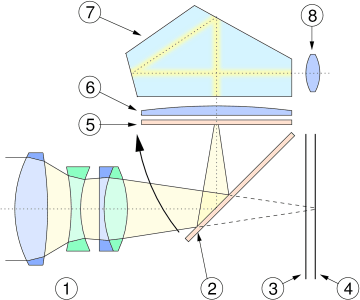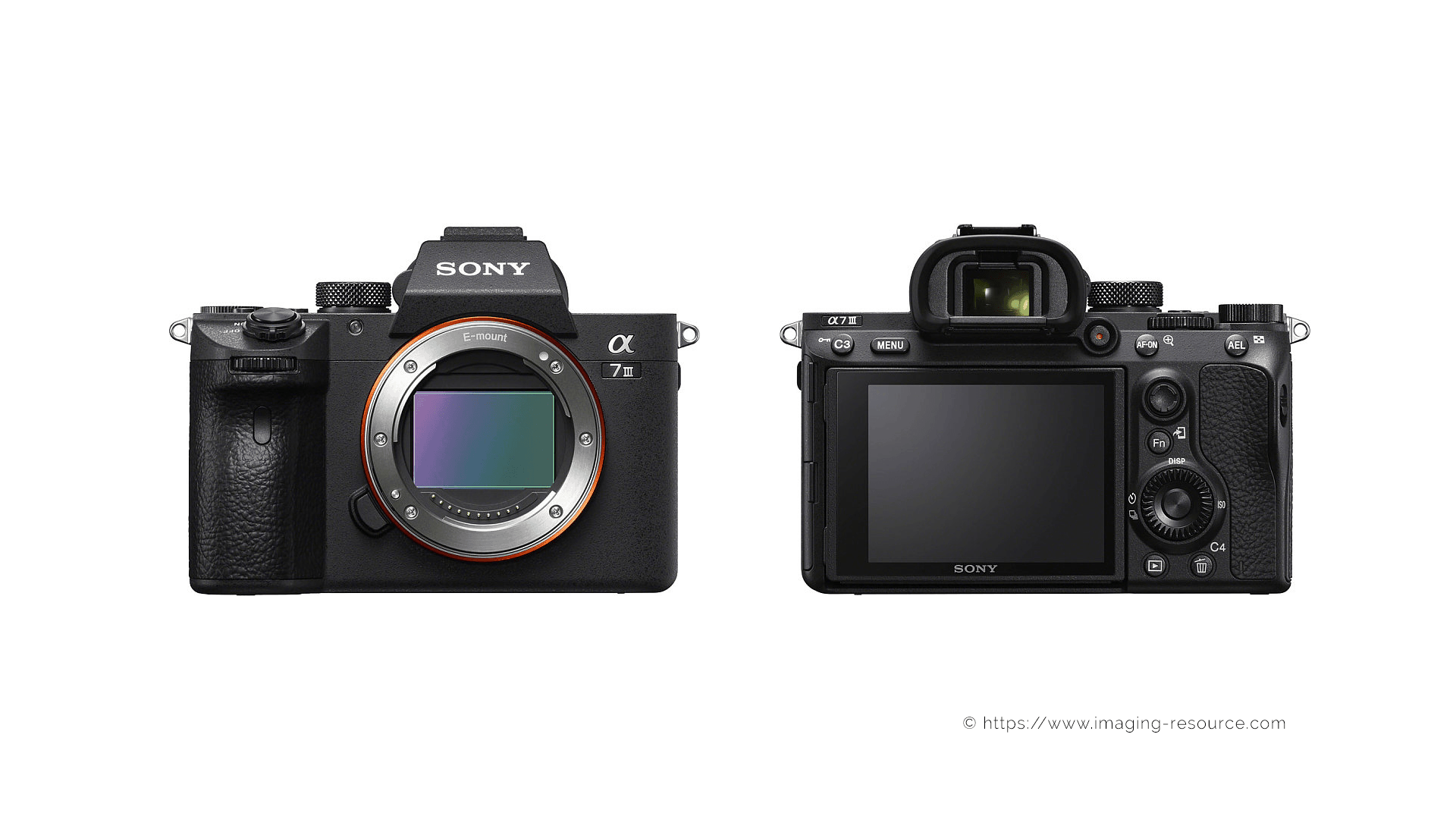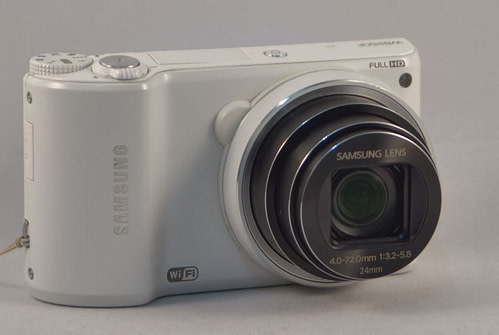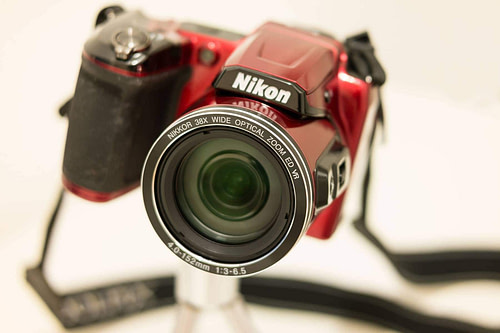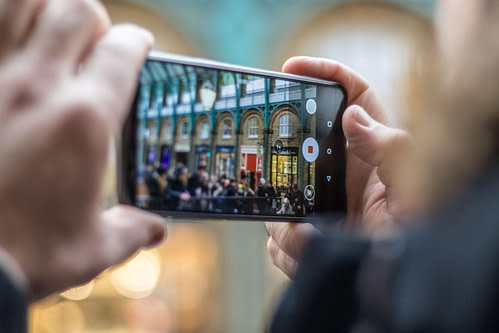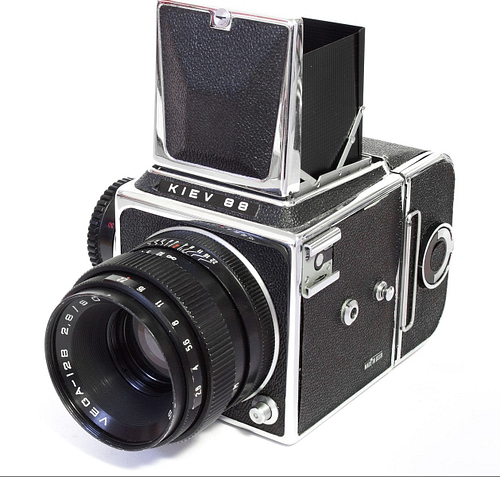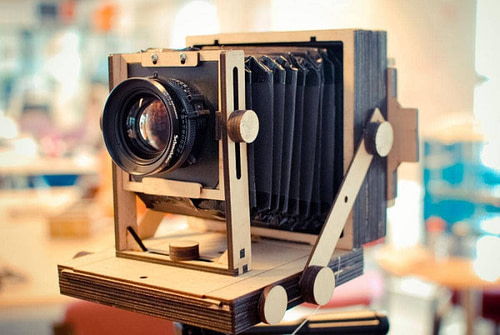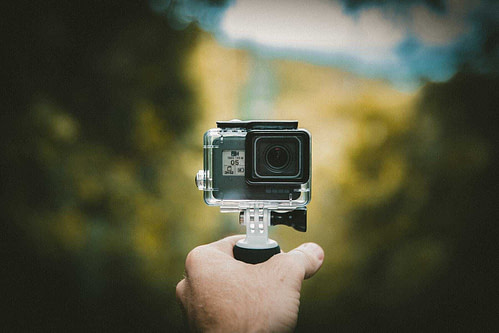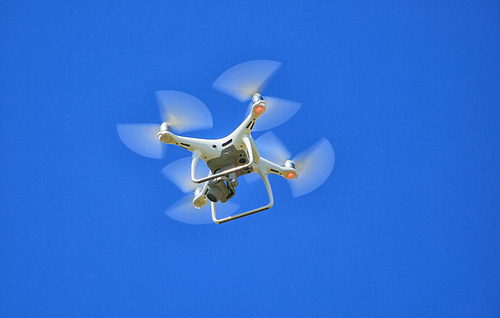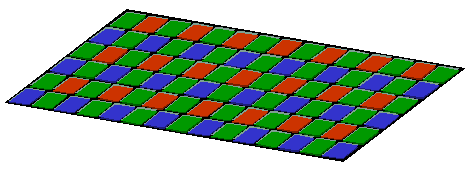[av_heading heading=’Modul 1 – Lektion 1
Die Kamera‚ tag=’h1′ link_apply=“ link=“ link_target=“ style=’blockquote modern-quote modern-centered‘ size=“ subheading_active=’subheading_below‘ subheading_size=’16‘ margin=“ padding=’20‘ color=“ custom_font=“ custom_class=“ admin_preview_bg=“ av-desktop-hide=“ av-medium-hide=“ av-small-hide=“ av-mini-hide=“ av-medium-font-size-title=“ av-small-font-size-title=“ av-mini-font-size-title=“ av-medium-font-size=“ av-small-font-size=“ av-mini-font-size=“]
Kamerabestandteile und -Systeme
[/av_heading]
[av_textblock size=“ font_color=“ color=“ av-medium-font-size=“ av-small-font-size=“ av-mini-font-size=“ av_uid=’av-23o10bg‘ admin_preview_bg=“]
Klar war die Ausrüstung teuer und ich mache keine besseren Bilder dadurch. Aber ich habe jetzt mehr Spass an meinen schlechten Bildern.
Heiko Kanzler
[/av_textblock]
[av_hr class=’invisible‘ height=’50‘ shadow=’no-shadow‘ position=’center‘ custom_border=’av-border-thin‘ custom_width=’50px‘ custom_border_color=“ custom_margin_top=’30px‘ custom_margin_bottom=’30px‘ icon_select=’yes‘ custom_icon_color=“ icon=’ue808′ font=’entypo-fontello‘ av_uid=’av-24llfek‘ admin_preview_bg=“]
[av_textblock size=“ font_color=“ color=“ av-medium-font-size=“ av-small-font-size=“ av-mini-font-size=“ av_uid=’av-23o10bg‘ admin_preview_bg=“]
In dieser Lektion lernst du…
- …wie jede Kamera im Wesentlichen funktioniert
- …wie eine DSLR aufgebaut ist und funktioniert
- …welche Kameratypen es gibt und was diese voneinander unterscheidet
- …alles wissenswerte zum Bildsensor, dem Herzstück deiner Kamera
Ich bin der festen Überzeugung, dass das bewusste Gestalten durch die Fotografie nur möglich ist, wenn man ein Verständnis über die wichtigsten fotografischen Parameter und technischen Bestandteile einer Kamera mitbringt:
[/av_textblock]
[av_hr class=’invisible‘ height=’70‘ shadow=’no-shadow‘ position=’center‘ custom_border=’av-border-thin‘ custom_width=’50px‘ custom_border_color=“ custom_margin_top=’30px‘ custom_margin_bottom=’30px‘ icon_select=’yes‘ custom_icon_color=“ icon=’ue808′ font=’entypo-fontello‘ av_uid=’av-21wuhlo‘ admin_preview_bg=“]
[av_one_full first min_height=“ vertical_alignment=’av-align-top‘ space=“ margin=’0px‘ margin_sync=’true‘ padding=’0px,20px,px,0px‘ border=“ border_color=“ radius=’0px‘ radius_sync=’true‘ background_color=“ src=“ attachment=“ attachment_size=“ background_position=’top left‘ background_repeat=’no-repeat‘ animation=“ mobile_breaking=“ mobile_display=“ av_uid=’av-612g98′]
[av_textblock size=“ font_color=“ color=“ av-medium-font-size=“ av-small-font-size=“ av-mini-font-size=“ av_uid=’av-1mkxnto‘ admin_preview_bg=“]
Grundfunktion und -aufbau jeder Fotokamera:
[/av_textblock]
[av_hr class=’invisible‘ height=’10‘ shadow=’no-shadow‘ position=’center‘ custom_border=’av-border-thin‘ custom_width=’50px‘ custom_border_color=“ custom_margin_top=’30px‘ custom_margin_bottom=’30px‘ icon_select=’yes‘ custom_icon_color=“ icon=’ue808′ font=’entypo-fontello‘ admin_preview_bg=“ av_uid=’av-1kq46lo‘]
[av_textblock size=“ font_color=“ color=“ av-medium-font-size=“ av-small-font-size=“ av-mini-font-size=“ av_uid=’av-1j00gho‘ admin_preview_bg=“]
[s3mm type=“video“ source=“cloudfront“ files=“Videos/2.1_1 KAMERA_v3.mp4″ titles=“Videos/2.1_1 KAMERA_v3.mp4″ splash=“https://mlzwymt16oxv.i.optimole.com/w:auto/h:auto/q:90/ig:avif/f:best/https://photo-inspirator.com/wp-content/uploads/2018/09/2.1-1.jpg“ /]
[/av_textblock]
[/av_one_full]
[av_one_fifth first min_height=“ vertical_alignment=’av-align-top‘ space=“ margin=’0px‘ margin_sync=’true‘ link=“ linktarget=“ link_hover=“ padding=’20px,0px,0px,0px‘ border=“ border_color=“ radius=’0px‘ radius_sync=’true‘ background=’bg_color‘ background_color=“ background_gradient_color1=“ background_gradient_color2=“ background_gradient_direction=’vertical‘ src=“ attachment=“ attachment_size=“ background_position=’top left‘ background_repeat=’no-repeat‘ animation=“ mobile_breaking=’av-break-at-tablet‘ mobile_display=“ av_uid=’av-1gszdng‘][/av_one_fifth]
[av_three_fifth min_height=“ vertical_alignment=’av-align-top‘ space=“ margin=’0px‘ margin_sync=’true‘ link=“ linktarget=“ link_hover=“ padding=’20px,0px,0px,0px‘ border=“ border_color=“ radius=’0px‘ radius_sync=’true‘ background=’bg_color‘ background_color=“ background_gradient_color1=“ background_gradient_color2=“ background_gradient_direction=’vertical‘ src=“ attachment=“ attachment_size=“ background_position=’top left‘ background_repeat=’no-repeat‘ animation=“ mobile_breaking=’av-break-at-tablet‘ mobile_display=“ av_uid=’av-1gszdng‘]
[av_icon_box position=’top‘ icon_style=“ boxed=“ icon=’ue80f‘ font=’entypo-fontello‘ title=’Die Mammut-Kamera von George R. Lawrence, 1900′ link=“ linktarget=“ linkelement=“ font_color=“ custom_title=“ custom_content=“ color=“ custom_bg=“ custom_font=“ custom_border=“ av-medium-font-size-title=“ av-small-font-size-title=“ av-mini-font-size-title=“ av-medium-font-size=“ av-small-font-size=“ av-mini-font-size=“ av_uid=’av-jh21dkak‘ admin_preview_bg=“]
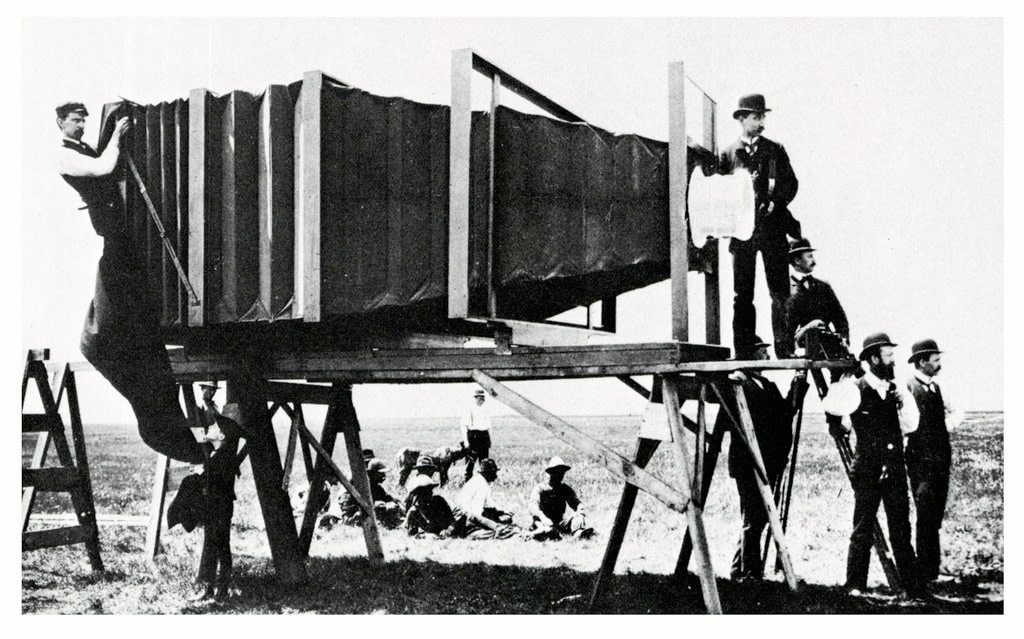
© https://de.wikipedia.org/w/index.php?title=George_R._Lawrence&oldid=157265072
[/av_icon_box]
[/av_three_fifth]
[av_one_fifth min_height=“ vertical_alignment=’av-align-top‘ space=“ margin=’0px‘ margin_sync=’true‘ link=“ linktarget=“ link_hover=“ padding=’20px,0px,0px,0px‘ border=“ border_color=“ radius=’0px‘ radius_sync=’true‘ background=’bg_color‘ background_color=“ background_gradient_color1=“ background_gradient_color2=“ background_gradient_direction=’vertical‘ src=“ attachment=“ attachment_size=“ background_position=’top left‘ background_repeat=’no-repeat‘ animation=“ mobile_breaking=’av-break-at-tablet‘ mobile_display=“ av_uid=’av-1gszdng‘][/av_one_fifth]
[av_hr class=’invisible‘ height=’100′ shadow=’no-shadow‘ position=’center‘ custom_border=’av-border-thin‘ custom_width=’50px‘ custom_border_color=“ custom_margin_top=’30px‘ custom_margin_bottom=’30px‘ icon_select=’yes‘ custom_icon_color=“ icon=’ue808′ font=’entypo-fontello‘ av_uid=’av-21wuhlo‘ admin_preview_bg=“]
[av_one_full first min_height=“ vertical_alignment=’av-align-top‘ space=“ margin=’0px‘ margin_sync=’true‘ padding=‘-15px,0px,0px,0px‘ border=“ border_color=“ radius=’0px‘ radius_sync=’true‘ background_color=“ src=“ attachment=“ attachment_size=“ background_position=’top left‘ background_repeat=’no-repeat‘ animation=“ mobile_breaking=“ mobile_display=“ av_uid=’av-159gykc‘]
[av_textblock size=“ font_color=“ color=“ av-medium-font-size=“ av-small-font-size=“ av-mini-font-size=“ av_uid=’av-130m2wc‘ admin_preview_bg=“]
Die Spiegelreflexkamera:
[/av_textblock]
[av_hr class=’invisible‘ height=’10‘ shadow=’no-shadow‘ position=’center‘ custom_border=’av-border-thin‘ custom_width=’50px‘ custom_border_color=“ custom_margin_top=’30px‘ custom_margin_bottom=’30px‘ icon_select=’yes‘ custom_icon_color=“ icon=’ue808′ font=’entypo-fontello‘ admin_preview_bg=“ av_uid=’av-120o53w‘]
[av_textblock size=“ font_color=“ color=“ av-medium-font-size=“ av-small-font-size=“ av-mini-font-size=“ av_uid=’av-zagwl8′ admin_preview_bg=“]
[s3mm type=“video“ source=“cloudfront“ files=“Videos/2.1_2 SLR 720p_v2.mp4″ titles=“Videos/2.1_2 SLR 720p_v2.mp4″ splash=“https://mlzwymt16oxv.i.optimole.com/w:auto/h:auto/q:90/ig:avif/f:best/https://photo-inspirator.com/wp-content/uploads/2018/09/2.1-2.jpg“ /]
[/av_textblock]
[/av_one_full]
[av_one_fifth first min_height=“ vertical_alignment=’av-align-top‘ space=“ margin=’0px‘ margin_sync=’true‘ link=“ linktarget=“ link_hover=“ padding=’20px,0px,0px,0px‘ border=“ border_color=“ radius=’0px‘ radius_sync=’true‘ background=’bg_color‘ background_color=“ background_gradient_color1=“ background_gradient_color2=“ background_gradient_direction=’vertical‘ src=“ attachment=“ attachment_size=“ background_position=’top left‘ background_repeat=’no-repeat‘ animation=“ mobile_breaking=’av-break-at-tablet‘ mobile_display=“ av_uid=’av-1gszdng‘][/av_one_fifth]
[av_three_fifth min_height=“ vertical_alignment=’av-align-top‘ space=“ margin=’0px‘ margin_sync=’true‘ link=“ linktarget=“ link_hover=“ padding=’20px,0px,0px,0px‘ border=“ border_color=“ radius=’0px‘ radius_sync=’true‘ background=’bg_color‘ background_color=“ background_gradient_color1=“ background_gradient_color2=“ background_gradient_direction=’vertical‘ src=“ attachment=“ attachment_size=“ background_position=’top left‘ background_repeat=’no-repeat‘ animation=“ mobile_breaking=’av-break-at-tablet‘ mobile_display=“ av_uid=’av-1gszdng‘]
[av_icon_box position=’top‘ icon_style=“ boxed=“ icon=’ue80f‘ font=’entypo-fontello‘ title=’Die Spiegelreflexkamera‘ link=“ linktarget=“ linkelement=“ font_color=“ custom_title=“ custom_content=“ color=“ custom_bg=“ custom_font=“ custom_border=“ av-medium-font-size-title=“ av-small-font-size-title=“ av-mini-font-size-title=“ av-medium-font-size=“ av-small-font-size=“ av-mini-font-size=“ av_uid=’av-jh21dkak‘ admin_preview_bg=“]
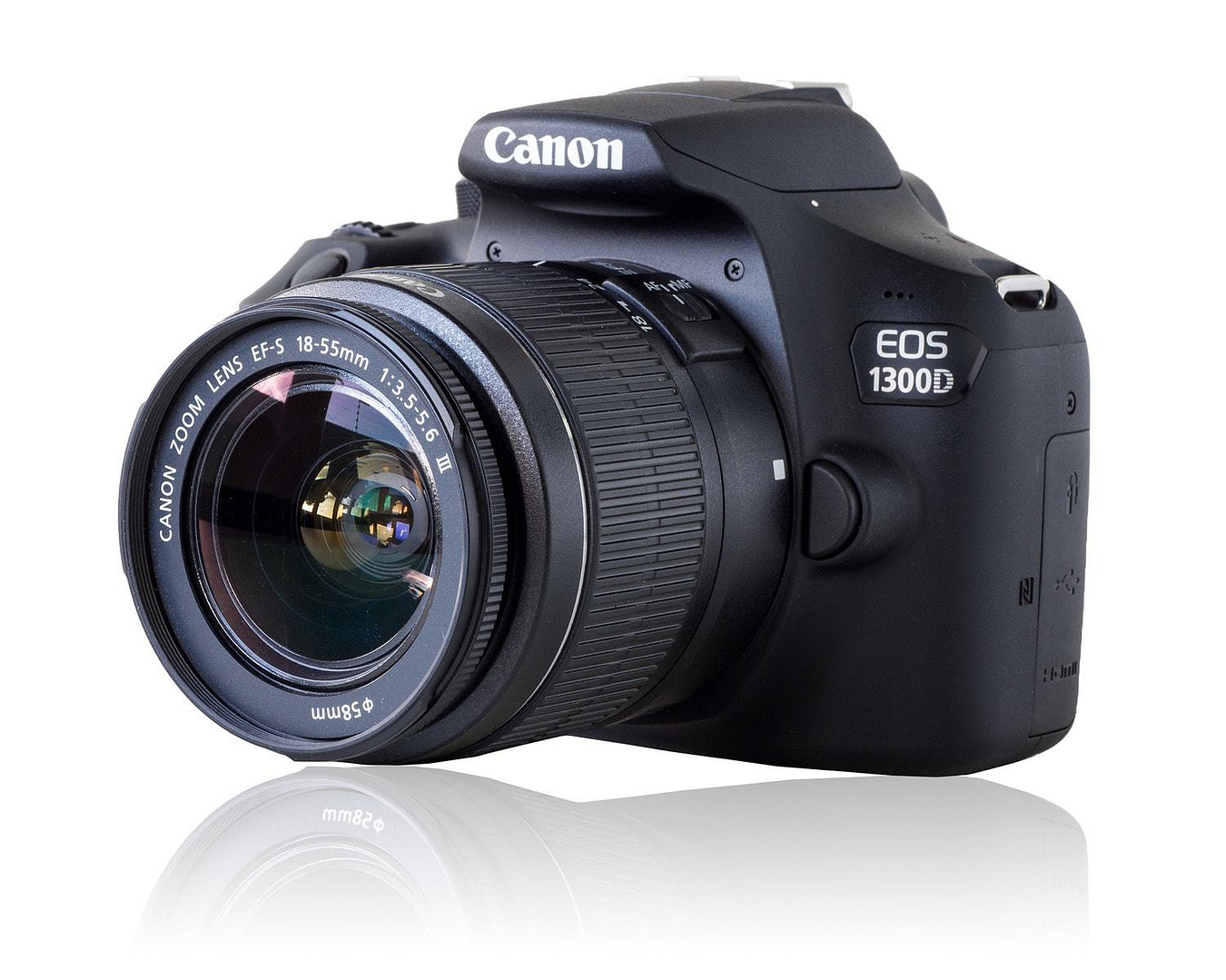
[/av_icon_box]
[/av_three_fifth]
[av_one_fifth min_height=“ vertical_alignment=’av-align-top‘ space=“ margin=’0px‘ margin_sync=’true‘ link=“ linktarget=“ link_hover=“ padding=’20px,0px,0px,0px‘ border=“ border_color=“ radius=’0px‘ radius_sync=’true‘ background=’bg_color‘ background_color=“ background_gradient_color1=“ background_gradient_color2=“ background_gradient_direction=’vertical‘ src=“ attachment=“ attachment_size=“ background_position=’top left‘ background_repeat=’no-repeat‘ animation=“ mobile_breaking=’av-break-at-tablet‘ mobile_display=“ av_uid=’av-1gszdng‘][/av_one_fifth]
[av_one_full first min_height=“ vertical_alignment=’av-align-top‘ space=“ margin=’0px‘ margin_sync=’true‘ link=“ linktarget=“ link_hover=“ padding=’20px,0px,0px,0px‘ border=“ border_color=“ radius=’0px‘ radius_sync=’true‘ background=’bg_color‘ background_color=“ background_gradient_color1=“ background_gradient_color2=“ background_gradient_direction=’vertical‘ src=“ attachment=“ attachment_size=“ background_position=’top left‘ background_repeat=’no-repeat‘ animation=“ mobile_breaking=’av-break-at-tablet‘ mobile_display=“ av_uid=’av-1gszdng‘]
[av_icon_box position=’top‘ icon_style=“ boxed=“ icon=’ue80f‘ font=’entypo-fontello‘ title=’Aufbau einer Spiegelreflexkamera‘ link=“ linktarget=“ linkelement=“ font_color=“ custom_title=“ custom_content=“ color=“ custom_bg=“ custom_font=“ custom_border=“ av-medium-font-size-title=“ av-small-font-size-title=“ av-mini-font-size-title=“ av-medium-font-size=“ av-small-font-size=“ av-mini-font-size=“ av_uid=’av-jh21dkak‘ admin_preview_bg=“]
Bei einer Spiegelreflexkamera gelangt das Licht durch die Linsen des Objektivs (1) und wird dann vom Schwingspiegel (2) reflektiert und auf die Einstellscheibe (5) projiziert. Mit einer Sammellinse (Feldlinse) (6) und durch die Reflexion innerhalb des Dachkantpentaprismas (7) wird das Bild schließlich im Sucher (8) sichtbar, der meist mit einem Dioptrienausgleich ausgestattet ist. Es gibt auch Spiegelreflexkameras, die anstelle eines Prismensuchers mit Dachkantpentaprisma (7) einen Lichtschachtsucher oder einen Porro-Spiegelsucher verwenden. Bei einer einäugigen Spiegelreflexkamera klappt der Spiegel unmittelbar vor einer Aufnahme nach oben (im Bild durch einen Pfeil gekennzeichnet), und der Verschluss (3) öffnet sich; das Bild wird dann nicht mehr in das Dachkantpentaprisma umgelenkt, sondern gelangt auf die Filmebene (4) beziehungsweise den Film oder Bildsensor.
© https://de.wikipedia.org/w/index.php?title=Spiegelreflexkamera&oldid=175302232
[/av_icon_box]
[/av_one_full]
[av_hr class=’invisible‘ height=’100′ shadow=’no-shadow‘ position=’center‘ custom_border=’av-border-thin‘ custom_width=’50px‘ custom_border_color=“ custom_margin_top=’30px‘ custom_margin_bottom=’30px‘ icon_select=’yes‘ custom_icon_color=“ icon=’ue808′ font=’entypo-fontello‘ av_uid=’av-21wuhlo‘ admin_preview_bg=“]
[av_one_full first min_height=“ vertical_alignment=’av-align-top‘ space=“ margin=’0px‘ margin_sync=’true‘ padding=’0px,20px,px,0px‘ border=“ border_color=“ radius=’0px‘ radius_sync=’true‘ background_color=“ src=“ attachment=“ attachment_size=“ background_position=’top left‘ background_repeat=’no-repeat‘ animation=“ mobile_breaking=“ mobile_display=“ av_uid=’av-612g98′]
[av_textblock size=“ font_color=“ color=“ av-medium-font-size=“ av-small-font-size=“ av-mini-font-size=“ av_uid=’av-1mkxnto‘ admin_preview_bg=“]
Weitere Kameratypen:
[/av_textblock]
[av_hr class=’invisible‘ height=’10‘ shadow=’no-shadow‘ position=’center‘ custom_border=’av-border-thin‘ custom_width=’50px‘ custom_border_color=“ custom_margin_top=’30px‘ custom_margin_bottom=’30px‘ icon_select=’yes‘ custom_icon_color=“ icon=’ue808′ font=’entypo-fontello‘ admin_preview_bg=“ av_uid=’av-1kq46lo‘]
[av_textblock size=“ font_color=“ color=“ av-medium-font-size=“ av-small-font-size=“ av-mini-font-size=“ av_uid=’av-1j00gho‘ admin_preview_bg=“]
[s3mm type=“video“ source=“cloudfront“ files=“Videos/2.1_3 WEITERE KAMERATYPEN v2.mp4″ titles=“Videos/2.1_3 WEITERE KAMERATYPEN v2.mp4″ splash=“https://mlzwymt16oxv.i.optimole.com/w:auto/h:auto/q:90/ig:avif/f:best/https://photo-inspirator.com/wp-content/uploads/2018/09/2.1-3.jpg“ /]
[/av_textblock]
[/av_one_full]
[av_hr class=’invisible‘ height=’70‘ shadow=’no-shadow‘ position=’center‘ custom_border=’av-border-thin‘ custom_width=’50px‘ custom_border_color=“ custom_margin_top=’30px‘ custom_margin_bottom=’30px‘ icon_select=’yes‘ custom_icon_color=“ icon=’ue808′ font=’entypo-fontello‘ av_uid=’av-21wuhlo‘ admin_preview_bg=“]
[av_textblock size=“ font_color=“ color=“ av-medium-font-size=“ av-small-font-size=“ av-mini-font-size=“ av_uid=’av-23o10bg‘ admin_preview_bg=“]
Die beste Kamera ist die, die man gerade dabei hat.
Elliott Erwitt
[/av_textblock]
[av_hr class=’invisible‘ height=’70‘ shadow=’no-shadow‘ position=’center‘ custom_border=’av-border-thin‘ custom_width=’50px‘ custom_border_color=“ custom_margin_top=’30px‘ custom_margin_bottom=’30px‘ icon_select=’yes‘ custom_icon_color=“ icon=’ue808′ font=’entypo-fontello‘ av_uid=’av-21wuhlo‘ admin_preview_bg=“]
[av_one_full first min_height=“ vertical_alignment=’av-align-top‘ space=“ margin=’0px‘ margin_sync=’true‘ link=“ linktarget=“ link_hover=“ padding=’20px,0px,0px,0px‘ border=“ border_color=“ radius=’0px‘ radius_sync=’true‘ background=’bg_color‘ background_color=“ background_gradient_color1=“ background_gradient_color2=“ background_gradient_direction=’vertical‘ src=“ attachment=“ attachment_size=“ background_position=’top left‘ background_repeat=’no-repeat‘ animation=“ mobile_breaking=’av-break-at-tablet‘ mobile_display=“ av_uid=’av-1gszdng‘]
[av_icon_box position=’top‘ icon_style=“ boxed=“ icon=’ue80f‘ font=’entypo-fontello‘ title=’Die Systemkamera (DSLM)‘ link=“ linktarget=“ linkelement=“ font_color=“ custom_title=“ custom_content=“ color=“ custom_bg=“ custom_font=“ custom_border=“ av-medium-font-size-title=“ av-small-font-size-title=“ av-mini-font-size-title=“ av-medium-font-size=“ av-small-font-size=“ av-mini-font-size=“ av_uid=’av-jh21dkak‘ admin_preview_bg=“]
Bei der Systemkamera fallen viele technische Prozesse und Bestandteile wie das Sucherprisma, der optische Sucher und – wie der Name bereits erahnen lässt – der Spiegel weg. Des Weiteren kann das Bajonett näher an den Sensor gerückt werden wodurch das Auflagemaß kleiner ist als an der DSLR. Dadurch können diese sog. DSLMs sehr viel kleiner verbaut werden. Der spiegellose Markt findet zunehmend Befürworter. Abgesehen von den eben genannten unterschieden, bieten diese Kamera das selbe Funktionsspektrum wie DSLRs.
[/av_icon_box]
[/av_one_full]
[av_one_full first min_height=“ vertical_alignment=’av-align-top‘ space=“ margin=’0px‘ margin_sync=’true‘ link=“ linktarget=“ link_hover=“ padding=’20px,0px,0px,0px‘ border=“ border_color=“ radius=’0px‘ radius_sync=’true‘ background=’bg_color‘ background_color=“ background_gradient_color1=“ background_gradient_color2=“ background_gradient_direction=’vertical‘ src=“ attachment=“ attachment_size=“ background_position=’top left‘ background_repeat=’no-repeat‘ animation=“ mobile_breaking=’av-break-at-tablet‘ mobile_display=“ av_uid=’av-1gszdng‘]
[av_icon_box position=’top‘ icon_style=“ boxed=“ icon=’ue80f‘ font=’entypo-fontello‘ title=’Die Kompaktkamera‘ link=“ linktarget=“ linkelement=“ font_color=“ custom_title=“ custom_content=“ color=“ custom_bg=“ custom_font=“ custom_border=“ av-medium-font-size-title=“ av-small-font-size-title=“ av-mini-font-size-title=“ av-medium-font-size=“ av-small-font-size=“ av-mini-font-size=“ av_uid=’av-jh21dkak‘ admin_preview_bg=“]
Kompaktkameras sind handlich und alltagstauglich. Ihre Bedienung ist einfach zu handhaben und auch die Qualität ist oft gut. Allerdings schielen sie eher auf den Amateur und weniger auf ambitionierte Fotografen. Die Nachteile gegenüber den eben vorgestellten Sytemen sind groß. Daher ist der Hauptkonkurrent der Kompaktkamera heutzutage das Smartphone. Sein Handy hat man ohnehin immer dabei und die Fotos können mittlerweile mit denen der Kompaktkameras mithalten.
[/av_icon_box]
[/av_one_full]
[av_one_full first min_height=“ vertical_alignment=’av-align-top‘ space=“ margin=’0px‘ margin_sync=’true‘ link=“ linktarget=“ link_hover=“ padding=’20px,0px,0px,0px‘ border=“ border_color=“ radius=’0px‘ radius_sync=’true‘ background=’bg_color‘ background_color=“ background_gradient_color1=“ background_gradient_color2=“ background_gradient_direction=’vertical‘ src=“ attachment=“ attachment_size=“ background_position=’top left‘ background_repeat=’no-repeat‘ animation=“ mobile_breaking=’av-break-at-tablet‘ mobile_display=“ av_uid=’av-1gszdng‘]
[av_icon_box position=’top‘ icon_style=“ boxed=“ icon=’ue80f‘ font=’entypo-fontello‘ title=’Die Bridge-Kamera‘ link=“ linktarget=“ linkelement=“ font_color=“ custom_title=“ custom_content=“ color=“ custom_bg=“ custom_font=“ custom_border=“ av-medium-font-size-title=“ av-small-font-size-title=“ av-mini-font-size-title=“ av-medium-font-size=“ av-small-font-size=“ av-mini-font-size=“ av_uid=’av-jh21dkak‘ admin_preview_bg=“]
Die Bridge-Kamera ist zwischen DSLR und Kompaktkamera angesiedelt. Sie unterscheidet sich in folgenden Merkmalen von der Kompaktkamera: Ihr Zoom-Bereich und das Gehäuse sind größer. Außerdem besitzt sie einen elektronischen LCD- Sucher, der aber anders als bei der DSLR nicht über den Spiegel, das Pentaprisma und die Mattscheibe läuft. Von der Spiegelreflexkamera unterscheidet sie sich zudem vor allem darin, dass sie kein Bajonett hat, d.h. das Objektiv kann nicht gewechselt werden und ist fest eingebaut.
[/av_icon_box]
[/av_one_full]
[av_one_full first min_height=“ vertical_alignment=’av-align-top‘ space=“ margin=’0px‘ margin_sync=’true‘ link=“ linktarget=“ link_hover=“ padding=’20px,0px,0px,0px‘ border=“ border_color=“ radius=’0px‘ radius_sync=’true‘ background=’bg_color‘ background_color=“ background_gradient_color1=“ background_gradient_color2=“ background_gradient_direction=’vertical‘ src=“ attachment=“ attachment_size=“ background_position=’top left‘ background_repeat=’no-repeat‘ animation=“ mobile_breaking=’av-break-at-tablet‘ mobile_display=“ av_uid=’av-1gszdng‘]
[av_icon_box position=’top‘ icon_style=“ boxed=“ icon=’ue80f‘ font=’entypo-fontello‘ title=’Das Smartphone‘ link=“ linktarget=“ linkelement=“ font_color=“ custom_title=“ custom_content=“ color=“ custom_bg=“ custom_font=“ custom_border=“ av-medium-font-size-title=“ av-small-font-size-title=“ av-mini-font-size-title=“ av-medium-font-size=“ av-small-font-size=“ av-mini-font-size=“ av_uid=’av-jh21dkak‘ admin_preview_bg=“]
Die Kameras unserer alltäglichen Begleiter werden zunehmend besser. Daher ist davon auszugehen, dass Kompaktkameras in absehbarer Zukunft obsolet sein werden. Zumal man sein Smartphone stets allzeit bereit in der Hosentasche mitführt.
[/av_icon_box]
[/av_one_full]
[av_one_full first min_height=“ vertical_alignment=’av-align-top‘ space=“ margin=’0px‘ margin_sync=’true‘ link=“ linktarget=“ link_hover=“ padding=’20px,0px,0px,0px‘ border=“ border_color=“ radius=’0px‘ radius_sync=’true‘ background=’bg_color‘ background_color=“ background_gradient_color1=“ background_gradient_color2=“ background_gradient_direction=’vertical‘ src=“ attachment=“ attachment_size=“ background_position=’top left‘ background_repeat=’no-repeat‘ animation=“ mobile_breaking=’av-break-at-tablet‘ mobile_display=“ av_uid=’av-1gszdng‘]
[av_icon_box position=’top‘ icon_style=“ boxed=“ icon=’ue80f‘ font=’entypo-fontello‘ title=’Die Mittelformatkamera‘ link=“ linktarget=“ linkelement=“ font_color=“ custom_title=“ custom_content=“ color=“ custom_bg=“ custom_font=“ custom_border=“ av-medium-font-size-title=“ av-small-font-size-title=“ av-mini-font-size-title=“ av-medium-font-size=“ av-small-font-size=“ av-mini-font-size=“ av_uid=’av-jh21dkak‘ admin_preview_bg=“]
Die (analoge) Mittelformatkamera hat im Gegensatz zur Kleinbildkamera einen größeren Film. Die meisten Kameras haben ein würfelartiges Kameragehäuse. Vorne befindet sich ein Bajonett, das zahlreiche – auch wenn nicht so viele wie bei Kleinbildsystemen – Wechselobjektive zur ermöglicht. Hinten lassen sich Wechselfilmkassetten anbringen und somit verschiedene Filmsorten verwenden.
Neben den analogen gibt es auch digitale Mittelformatkameras. Die sehr hohen Anschaffung rechtfertigen die Nutzung von digitalen Mittelformatkameras nur für absolute Vollprofis. Dementsprechend werden sie hauptsächlich in der Werbefotografie verwendet, wo es die Budgets erlauben mit teuerstem Equipment zu arbeiten.
[/av_icon_box]
[/av_one_full]
[av_one_full first min_height=“ vertical_alignment=’av-align-top‘ space=“ margin=’0px‘ margin_sync=’true‘ link=“ linktarget=“ link_hover=“ padding=’20px,0px,0px,0px‘ border=“ border_color=“ radius=’0px‘ radius_sync=’true‘ background=’bg_color‘ background_color=“ background_gradient_color1=“ background_gradient_color2=“ background_gradient_direction=’vertical‘ src=“ attachment=“ attachment_size=“ background_position=’top left‘ background_repeat=’no-repeat‘ animation=“ mobile_breaking=’av-break-at-tablet‘ mobile_display=“ av_uid=’av-1gszdng‘]
[av_icon_box position=’top‘ icon_style=“ boxed=“ icon=’ue80f‘ font=’entypo-fontello‘ title=’Die Großformatkamera‘ link=“ linktarget=“ linkelement=“ font_color=“ custom_title=“ custom_content=“ color=“ custom_bg=“ custom_font=“ custom_border=“ av-medium-font-size-title=“ av-small-font-size-title=“ av-mini-font-size-title=“ av-medium-font-size=“ av-small-font-size=“ av-mini-font-size=“ av_uid=’av-jh21dkak‘ admin_preview_bg=“]
Das Objektiv und die Filmebene werden hier anders als bei anderen Kameratypen frei gegeneinander bewegt. Anstelle eines Kameragehäuses befindet sich zwischen dem Objektiv und Film kein Spiegel, sondern ein zick-zack-geformter Balgen, was eine Perspektivkorrektur und Schärfensteuerung ermöglicht. Durch die eigenständige Kontrolle der Schärfe und die mit einer Postkarte zu vergleichenden riesen großen Filmformate, erfordert die Großbildkamera eine besonders sorgfältige und genaue Arbeit. Großbildkameras kommen hauptsächlich bei Puristen in den Bereichen Landschaftsfotografie und Architekturfotografie zum Einsatz.
[/av_icon_box]
[/av_one_full]
[av_one_full first min_height=“ vertical_alignment=’av-align-top‘ space=“ margin=’0px‘ margin_sync=’true‘ link=“ linktarget=“ link_hover=“ padding=’20px,0px,0px,0px‘ border=“ border_color=“ radius=’0px‘ radius_sync=’true‘ background=’bg_color‘ background_color=“ background_gradient_color1=“ background_gradient_color2=“ background_gradient_direction=’vertical‘ src=“ attachment=“ attachment_size=“ background_position=’top left‘ background_repeat=’no-repeat‘ animation=“ mobile_breaking=’av-break-at-tablet‘ mobile_display=“ av_uid=’av-1gszdng‘]
[av_icon_box position=’top‘ icon_style=“ boxed=“ icon=’ue80f‘ font=’entypo-fontello‘ title=’Die Action-Kamera‘ link=“ linktarget=“ linkelement=“ font_color=“ custom_title=“ custom_content=“ color=“ custom_bg=“ custom_font=“ custom_border=“ av-medium-font-size-title=“ av-small-font-size-title=“ av-mini-font-size-title=“ av-medium-font-size=“ av-small-font-size=“ av-mini-font-size=“ av_uid=’av-jh21dkak‘ admin_preview_bg=“]
Bei Aufnahmen unter extremen Bedingungen, wie z.B. unter Wasser, beim Motorrad fahren oder surfen kann man auf eine Action-Kamera zurückgreifen. Der Vorteil dieser unzerstörbaren Mini-Kameras liegt auch in der sehr weitwinkligen Perspektive. Dadurch lassen sich diese Kameras auch ohne Bildschirm leicht ausrichten.
[/av_icon_box]
[/av_one_full]
[av_one_full first min_height=“ vertical_alignment=’av-align-top‘ space=“ margin=’0px‘ margin_sync=’true‘ link=“ linktarget=“ link_hover=“ padding=’20px,0px,0px,0px‘ border=“ border_color=“ radius=’0px‘ radius_sync=’true‘ background=’bg_color‘ background_color=“ background_gradient_color1=“ background_gradient_color2=“ background_gradient_direction=’vertical‘ src=“ attachment=“ attachment_size=“ background_position=’top left‘ background_repeat=’no-repeat‘ animation=“ mobile_breaking=’av-break-at-tablet‘ mobile_display=“ av_uid=’av-1gszdng‘]
[av_icon_box position=’top‘ icon_style=“ boxed=“ icon=’ue80f‘ font=’entypo-fontello‘ title=’Die Drohne‘ link=“ linktarget=“ linkelement=“ font_color=“ custom_title=“ custom_content=“ color=“ custom_bg=“ custom_font=“ custom_border=“ av-medium-font-size-title=“ av-small-font-size-title=“ av-mini-font-size-title=“ av-medium-font-size=“ av-small-font-size=“ av-mini-font-size=“ av_uid=’av-jh21dkak‘ admin_preview_bg=“]
Diese kleinen Fluggeräte, die meistens weitwinklige Kameras besitzen, ermöglichen es, Aufnahmen aus der Luftbildperspektive zu machen, wobei ihre Kameras in der Regel 4K-Videos aufzeichnen und oft einen hohen Kontrastumfang bewältigen können.
[/av_icon_box]
[/av_one_full]
[av_one_full first min_height=“ vertical_alignment=’av-align-top‘ space=“ margin=’0px‘ margin_sync=’true‘ link=“ linktarget=“ link_hover=“ padding=’20px,0px,0px,0px‘ border=“ border_color=“ radius=’0px‘ radius_sync=’true‘ background=’bg_color‘ background_color=“ background_gradient_color1=“ background_gradient_color2=“ background_gradient_direction=’vertical‘ src=“ attachment=“ attachment_size=“ background_position=’top left‘ background_repeat=’no-repeat‘ animation=“ mobile_breaking=’av-break-at-tablet‘ mobile_display=“ av_uid=’av-1gszdng‘]
[av_icon_box position=’top‘ icon_style=“ boxed=“ icon=’ue803′ font=’entypo-fontello‘ title=’EXKURS:Der Bildsensor‘ link=“ linktarget=“ linkelement=“ font_color=“ custom_title=“ custom_content=“ color=“ custom_bg=“ custom_font=“ custom_border=“ av-medium-font-size-title=“ av-small-font-size-title=“ av-mini-font-size-title=“ av-medium-font-size=“ av-small-font-size=“ av-mini-font-size=“ av_uid=’av-jh21dkak‘ custom_class=“ admin_preview_bg=“]
Der Sensor deiner Kamera besteht aus Millionen kleiner Photodioden, die wir hier „Pixel“ nennen wollen. Jedes Mal, wenn eines dieser Pixel von einem Photon, einem Lichtteilchen, getroffen wird, erzeugt es eine bestimmte Menge an Ladung. Wenn deine Kamera diese Pixel ausliest, registriert sie deren Position und Ladung. Ein Pixel, das stärker geladen ist, wird heller dargestellt. So entsteht ein Bild.
Wie aber kommt die Farbe auf’s Bild?
Hierfür sitzt auf jedem Pixel ein grüner, blauer oder roter Filter. Jedes Pixel misst also nur Licht einer bestimmten Farbe. Durch Überlagerung benachbarter, grüner, blauer und roter Pixel, die in einem sogenannten Bayer-Muster angeordnet sind, berechnet der Sensor die entsprechende Gesamtfarbe:
© https://upload.wikimedia.org/wikipedia/commons/b/bc/CCD_Bayer_Filter.png
Der Sensor-Aufbau:
Nun zum Aufbau einer Sensoreinheit: auf dem eigentlichen Sensor sind ein Infrarot- und ein Anti-Aliasing-(AA-) Filter angebracht. Den Sensor habe ich schon in seinen Grundzügen erklärt, sehen wir uns die einzelnen Pixel aber nochmal genauer an. Tatsächlich bestehen diese nämlich nicht nur aus Fotodioden und Filtern: auf jedem Pixel ist über dem Farbfilter eine kleine Linse angebracht, die das Licht auf die Diode fokussiert. Außerdem sitzt auf der Photodiode eine „signalverarbeitende Schicht“, Elektronik, welche die Ladung zu einem Signal umwandelt.
Bei den meisten Sensoren liegt diese signalverarbeitende Schicht zwischen Filter und Photodiode, das ist preiswerter in der Herstellung, hat allerdings den Nachteil, dass ein Teil der lichtempfindlichen Diode von der Elektronik verdeckt wird. Bei „rückwärtig belichteten Sensoren“ liegt die Diodenoberfläche dagegen über der Elektronik, dadurch wird die effektive (lichtbeschienene) Diodenfläche vergrößert. Diese Sensoren sind dadurch lichtempfindlicher und rauschärmer.
Der AA-Filter, der über dem Sensor liegt, erzeugt eine kaum wahrnehmbare Unschärfe, welche Aliasing-Effekte, wie den „Moiré Effekt“ -einem Abbildungsfehler, bei dem der Sensor besonders feine Muster als Farbänderungen interpretiert- vermindert. Gerade hochklassige Kameras wie zB. Meine Alpha 7r verzichten oft auf diesen Filter, um eine maximale Bildschärfe zu erzielen. Stattdessen verwenden sie Software, die diese Effekte erkennt und teilweise behebt.
Darüber sitzt ein weiterer Filter, der infrarotes Licht herausfiltert, da dieses zu Unschärfe und Farbverfälschungen führen würde. Meist sind diese Filter beweglich um durch Vibrationen Staub abzuschütteln.
Sensortypen:
Die beiden am häufigsten verwendeten Sensortypen, die nach dem oben beschriebenen Prinzip funktionieren, sind CCD- und CMOS- Sensoren. Der grundliegende Unterschied zwischen diesen ist, dass die Pixel der CCDs nacheinander ausgelesen, die des CMOS’ hingegen simultan ausgelesen werden, wodurch letztere mehr Bilder pro Sekunde verarbeiten können. Außerdem sind CMOSs preiswerter in der Herstellung und verbrauchen weniger Strom.
Ein Vorteil der CCD Sensoren ist, dass die einzelnen Pixel mit weniger Elektronik auskommen und dadurch mehr Licht einfangen, was zu einer besseren Bildqualität führt. Da die Elektronik aber immer kleiner gebaut werden kann, kommt die Bildqualität des CMOSs der des CCDs immer näher.
Der Foveon-Sensor, ist eine Weiterentwicklungen des CMOS-Sensors. Hier sind drei Siliziumdioden übereinander angeordnet, wodurch die Farbe des Lichtes aus einem einzigen Pixel berechnet werden kann. Eine Schwäche dieses Sensors ist seine Farbtreue, besonders im roten bis grünen Bereich. Auch weisen Langzeitbelichtungen ein verstärktes grünliches Rauschen auf.
Qualitätsmerkmale von Sensoren:
Jetzt wollen wir noch auf ein paar Qualitätsmerkmale eines Sensors eingehen: zunächst ist da die von den Kameraherstellern so eifrig beworbene Auflösung, welche die Anzahl der Pixel auf dem Sensor angibt. Je größer die Auflösung des Sensors ist, desto größer kann auch das aufgenommene Bild abgebildet werden. Allerdings ist dieses Pixelwettrüsten nicht immer sinnvoll. Im Kleinformatigen Bereich (Vollformat) reichen 12 bis 20 Megapixel vollkommen aus. Bei höheren Auflösungen werden einzelne Pixel immer kleiner. Die Pixelgröße ist ein ebenso wichtiges Qualitätsmerkmal deines Sensors wie die Auflösung: je größer ein Pixel ist, desto mehr Licht kann es einfangen, desto Lichtempfindlicher wird es. Dadurch verbessern sich die Abstufung der Helligkeitswerte, und das Rauschverhalten. Die Größe der Pixel hängt neben ihrer Anzahl natürlich auch von der Größe des Sensors ab.
Die vier gängigsten Sensoren sind: Mittelformatsensoren, kleinere Vollformatsensoren, nochmals kleinere APS-Formate und das Micro Four Thirds Format, dessen Fläche ein Viertel des Vollformatsensors misst. Die Größe deines Sensors beeinflusst außerdem die Wahrnehmung der Schärfentiefe deiner Bilder. Größere Sensoren ermöglichen eine sehr geringe Schärfentiefe bei einem verhältnismäßig großen Bildwinkel bzw. Bildausschnitt. Physikalisch betrachtet ist das Thema Schärfentiefe und Sensorgröße äußerst komplex und es werden viele Unwahrheiten verbreitet. Wir werden darauf noch in der nächsten Lektion eingehen.
© https://de.wikipedia.org/wiki/Bildsensor#/media/File:Sensorformate.svg
Ein weiteres Qualitätsmerkmal von Bildsensoren ist die Pixeltiefe. Diese sagt aus, wie viele Helligkeitsabstufungen ein Pixel darstellen kann. Ein Pixel mit einem Bit kann entweder Schwarz oder Weiß sein, zwei Bit liefern schon vier Graustufen und mit einer Tiefe von 8-Bit kann man erstmals mehr Farben darstellen, als das Menschliche Auge wahrnehmen kann. Um spätere Farbanpassungen vornehmen zu können, sollte dein Sensor aber möglichst 12 Bit Tiefe oder mehr haben.
Zu guter Letzt noch der Dynamikumfang: dieser gibt an, bis zu welchem Motivkontrast der Sensor noch alle Helligkeitsabstufungen abbilden kann, wie groß also der Unterschied zwischen dem hellsten und dem dunkelsten Bereich deines Motivs sein darf, ohne dass Details dadurch verloren gehen, dass die Höhen ausbrennen oder die Tiefen zulaufen. Der Dynamikumfang wird in Densität gemessen, hier gilt: je größer, desto besser.
[/av_icon_box]
[/av_one_full][av_hr class=’invisible‘ height=’100′ shadow=’no-shadow‘ position=’center‘ custom_border=’av-border-thin‘ custom_width=’50px‘ custom_border_color=“ custom_margin_top=’30px‘ custom_margin_bottom=’30px‘ icon_select=’yes‘ custom_icon_color=“ icon=’ue808′ font=’entypo-fontello‘ av_uid=’av-cyyakc‘ admin_preview_bg=“]
[av_textblock size=“ font_color=“ color=“ av-medium-font-size=“ av-small-font-size=“ av-mini-font-size=“ av_uid=’av-13f3op‘ admin_preview_bg=“]
Dein Kursfortschritt:
[av_hr class=’invisible‘ height=’100′ shadow=’no-shadow‘ position=’center‘ custom_border=’av-border-thin‘ custom_width=’50px‘ custom_border_color=“ custom_margin_top=’30px‘ custom_margin_bottom=’30px‘ icon_select=’yes‘ custom_icon_color=“ icon=’ue808′ font=’entypo-fontello‘ av_uid=’av-9acezw‘ admin_preview_bg=“]
[av_one_half first min_height=“ vertical_alignment=“ space=“ custom_margin=“ margin=’0px‘ padding=’0px‘ border=“ border_color=“ radius=’0px‘ background_color=“ src=“ background_position=’top left‘ background_repeat=’no-repeat‘ animation=“ mobile_breaking=“ mobile_display=“ av_uid=’av-77dasc‘]
[av_button label=’VORHERIGE LEKTION‘ link=’page,641′ link_target=“ size=’small‘ position=’center‘ label_display=“ icon_select=’no‘ icon=’ue800′ font=’entypo-fontello‘ color=’theme-color‘ custom_bg=’#444444′ custom_font=’#ffffff‘ av_uid=’av-mekb0′ admin_preview_bg=“]
[/av_one_half]
[av_one_half min_height=“ vertical_alignment=“ space=“ custom_margin=“ margin=’0px‘ padding=’0px‘ border=“ border_color=“ radius=’0px‘ background_color=“ src=“ background_position=’top left‘ background_repeat=’no-repeat‘ animation=“ mobile_breaking=“ mobile_display=“ av_uid=’av-3ol1ik‘]
[av_button label=’NÄCHSTE LEKTION‘ link=’page,7990′ link_target=“ size=’small‘ position=’center‘ label_display=“ icon_select=’no‘ icon=’ue800′ font=’entypo-fontello‘ color=’theme-color‘ custom_bg=’#444444′ custom_font=’#ffffff‘ av_uid=’av-20q4cs‘ admin_preview_bg=“]
[/av_one_half]

